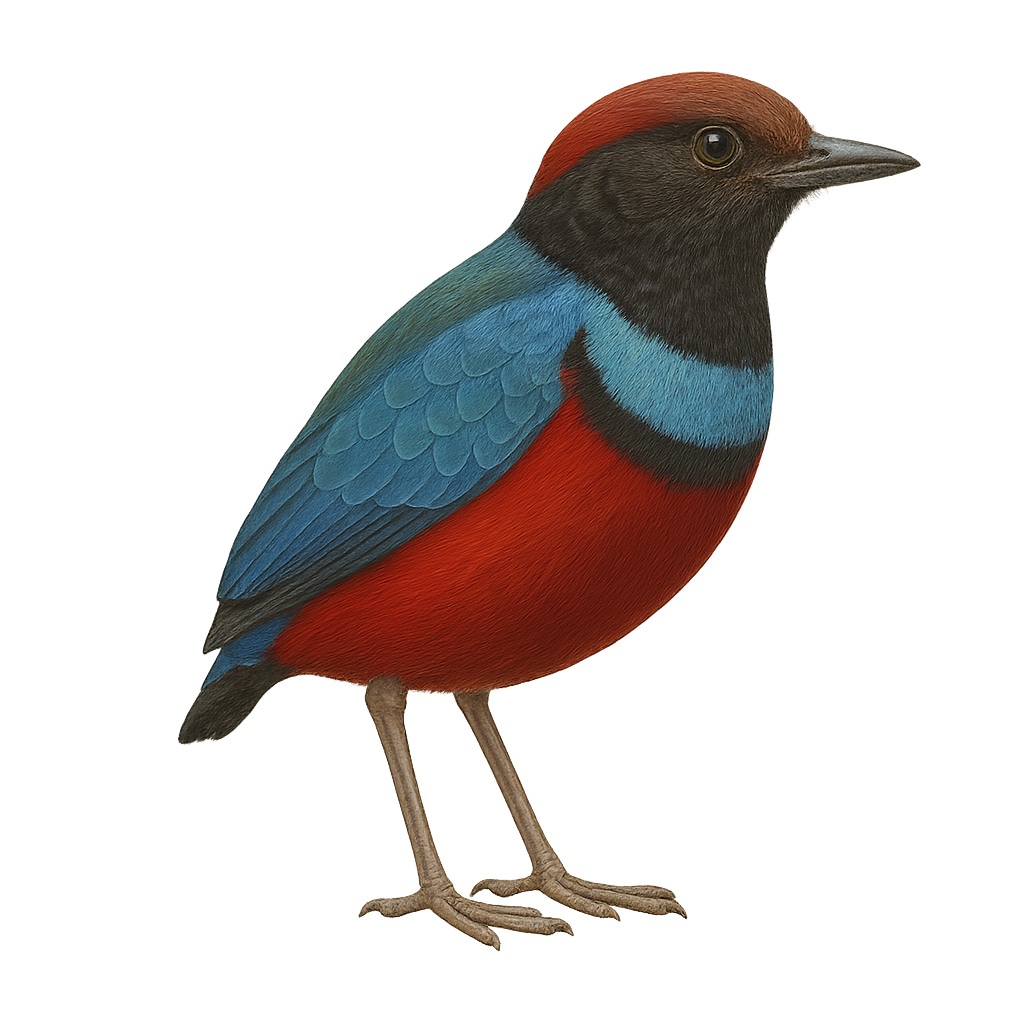Your wildlife photography guide.
Explore the red-bellied pitta in detail, study its behavior, prepare your shots.
Where to observe and photograph the red-bellied pitta in the wild
Learn where and when to spot the red-bellied pitta in the wild, how to identify the species based on distinctive features, and what natural environments it inhabits. The WildlifePhotographer app offers tailored photography tips that reflect the red-bellied pitta’s behavior, helping you capture better wildlife images. Explore the full species profile for key information including description, habitat, active periods, and approach techniques.
Red-bellied Pitta
Scientific name: Erythropitta erythrogaster

IUCN Status: Least Concern
Family: PITTIDAE
Group: Birds
Sensitivity to human approach: Suspicious
Minimum approach distance: 5 m
Courtship display: May to June
Incubation: 14-16 jours
Hatchings: May to July
Habitat:
Tropical forests, dense undergrowth, mangroves
Activity period :
Primarily active during the day, with peak activity in the morning and late afternoon.
Identification and description:
The Red-bellied Pitta, or Erythropitta erythrogaster, is a colorful and fascinating bird native to the tropical forests of Southeast Asia. Its striking plumage, predominantly red on the belly, contrasts with shades of blue and green on the back and wings, making it a visually impressive sight. This elusive bird prefers dense undergrowth where it primarily feeds on insects and small invertebrates. Although often difficult to spot due to its shy behavior, it is cherished by birdwatchers for its beauty and melodious song. The Red-bellied Pitta plays a crucial role in the ecosystem by controlling insect populations and aiding in seed dispersal.
Recommended lens:
400 mm – adjust based on distance, desired framing (portrait or habitat), and approach conditions.
Photography tips:
To photograph the Red-bellied Pitta, it is advisable to use a telephoto lens of at least 400mm to capture detailed images without disturbing the bird. Look for dense undergrowth areas where this bird is likely to forage. Be patient and discreet, as the Pitta is suspicious and may quickly hide. Use a tripod to stabilize your camera and adjust the ISO settings to compensate for the low light in tropical forests.
The WildlifePhotographer App is coming soon!
Be the first to explore the best nature spots, track rutting seasons, log your observations, and observe more wildlife.
Already 1 431 wildlife lovers subscribed worldwide

